A recent study by a military scholar in the inaugural publication of The Army Press has called for the U.S. Army to abandon airborne jumps totally.

By U.S. Military [CC BY 2.0], via Wikimedia Commons
Continue reading
A recent study by a military scholar in the inaugural publication of The Army Press has called for the U.S. Army to abandon airborne jumps totally.

By U.S. Military [CC BY 2.0], via Wikimedia Commons
Continue reading
The Royal Navy’s third Astute-class submarine, HMS Artful, has fired a torpedo using a new UK designed and built command and control system.
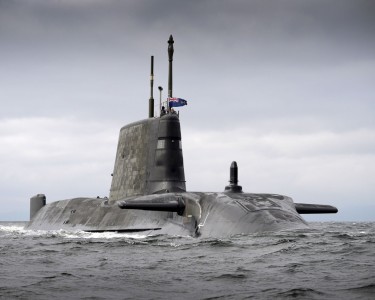
Photo: Royal Navy
Continue reading
U.S. Marines and soldiers from the Japan Ground Self-Defense Force stormed the beach in their amphibious assault vehicles at Camp Pendleton last week during Exercise Iron Fist 2016.
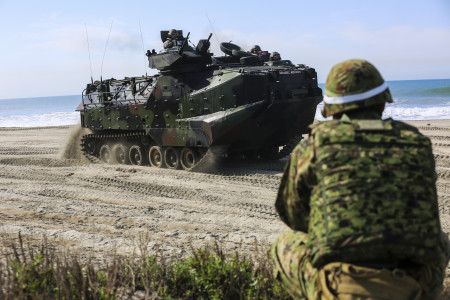
A Japan Ground Self-Defense Force solider provides security as an amphibious assault vehicle moves to a viable position to provide perimeter security during a scenario based, battalion-sized amphibious landing exercise (PHIBLEX) for Exercise Iron Fist 2016, Feb. 26, 2016. Capable maritime forces help ensure stability and prosperity around the world, and bilateral exercises, like Iron Fist, help partner nations improve their own maritime capability. (U.S. Marine Corps photo by Cpl. April L. Price/Released)
Two Libyan military officials said French special forces have been operating inside the country to fight against ISIL and other militant groups in Benghazi.
By DoD photo by: SRA ANDY DUNAWAY ([1]) [Public domain], via Wikimedia Commons
Continue reading
Somewhere in the Philippine Sea, Japanese Maritime Self-Defense Force Murasame-class destroyer JDS Samidare (DD-106) are feeding her four gas turbines using an advanced biofuel mixture thanks to the U.S. Navy.
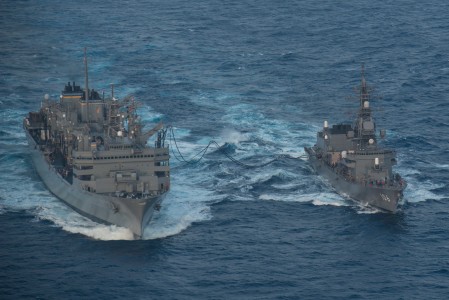
160222-N-BR087-362 PHILIPPINE SEA (Feb. 22, 2016) – Japanese Maritime Self-Defense Force Murasame-class destroyer JDS Samidare (DD-106) receives an advanced biofuel mixture from the fast combat support ship USNS Rainier (T-AOE 7) during a replenishment at sea. Providing a ready force supporting security and stability in the Indo-Asia-Pacific, the John C. Stennis Strike Group is operating as part of the Great Green Fleet on a regularly scheduled 7th Fleet deployment. (U.S. Navy photo by Mass Communication Specialist Seaman Cole C. Pielop/Released)
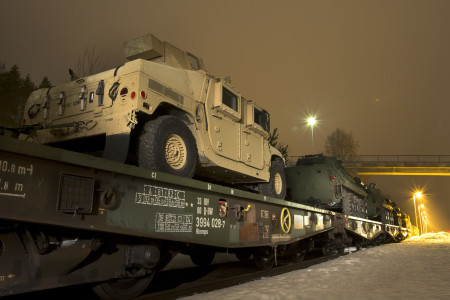
One of several transportation options for moving U.S. Marine Corps fighting vehicles and equipment is by train. Rena, Norway was the location where Light Armored Vehicles were loaded after training with the Telemark Battalion. The crews are now trained and the vehicles have been tested in harsh winter conditions. They will join the host nation of Norway along with the other 10 participating nations for Exercise Cold Response set to begin on the 29th. The exercise will feature maritime, land, and air operations to underscore NATO’s ability to defend against any threat in any environment. The location in central Norway provides a unique, extreme cold-weather environment for all forces involved to develop tactics, techniques, and procedures and learn from one another.
Estonian defense solutions provider Milrem has partnered with ST Kinetics for a variant of the former’s Tracked Hybrid Modular Infantry System (THeMIS).
India’s two aircraft carriers lead a 54-ship passage exercise (PASSEX) in the Bay of Bengal following the end of the International Fleet Review. Twenty foreign ships took part.
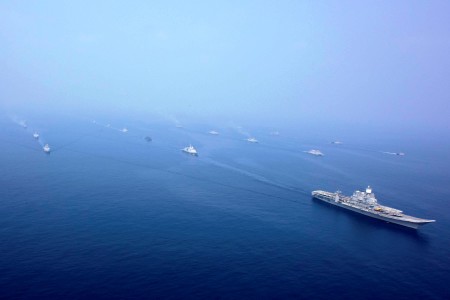
Photos: Indian Navy
Elbit unveiled its Seagull unmanned surface vehicle (USV) on Feb. 8. The vessel has replaceable mission modules for mine hunting and anti-submarine warfare.
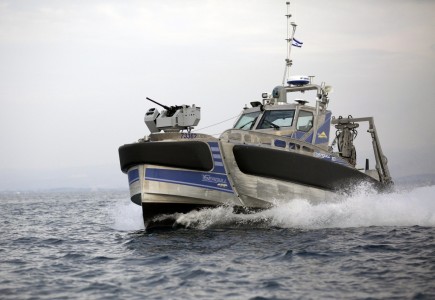
Photo: Elbit
Israel has unveiled the Namer armored personnel carrier that is equipped with the Trophy active protection system.